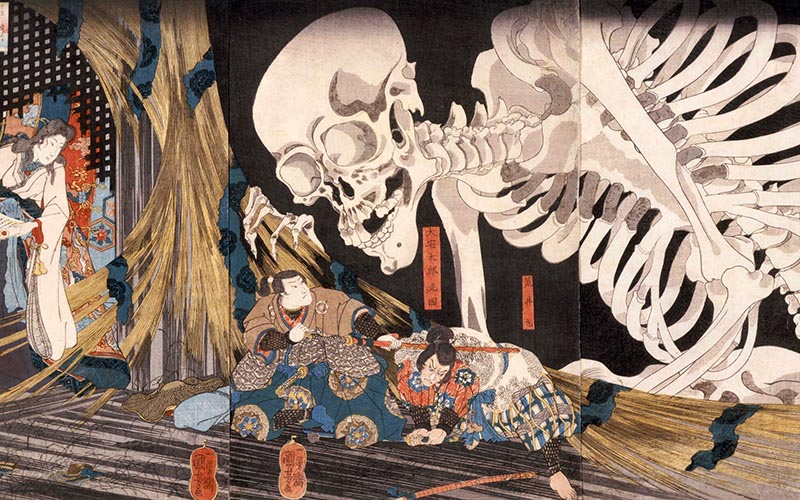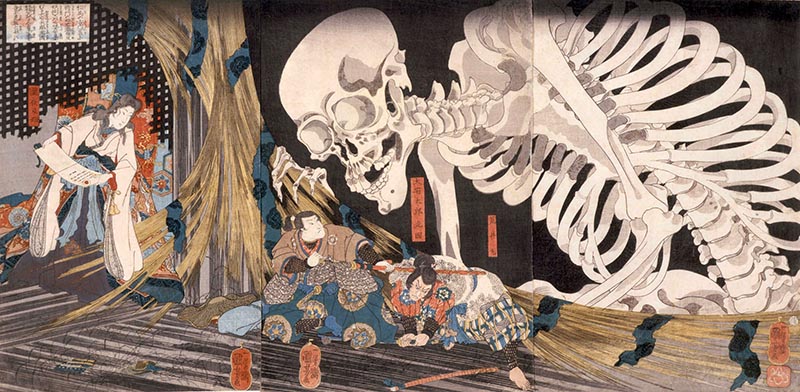
Utagawa Kuniyoshi astonished people with his bizarre Ukiyo-e
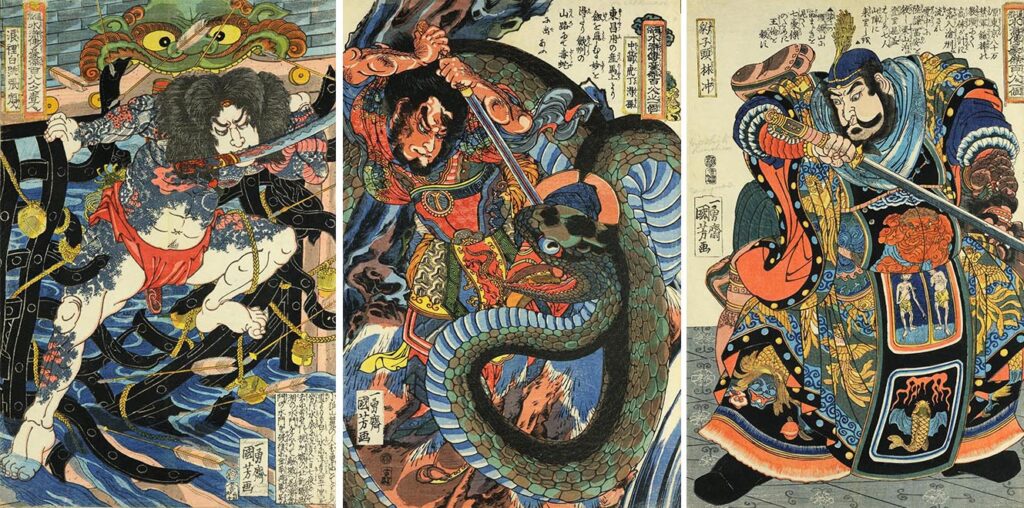
Utagawa Kuniyoshi was an Ukiyo-e artist who fascinated the people of Edo with his bizarre ideas and boldly incorporating new techniques.
His Ukiyo-e incorporating Western shadow method and laws of perspective, wide three-panel Ukiyo-e, and novel and bizarre Ukiyo-e using the human body and cats as models, gained great popularity among the people of Edo.
Biography of Utagawa Kuniyoshi
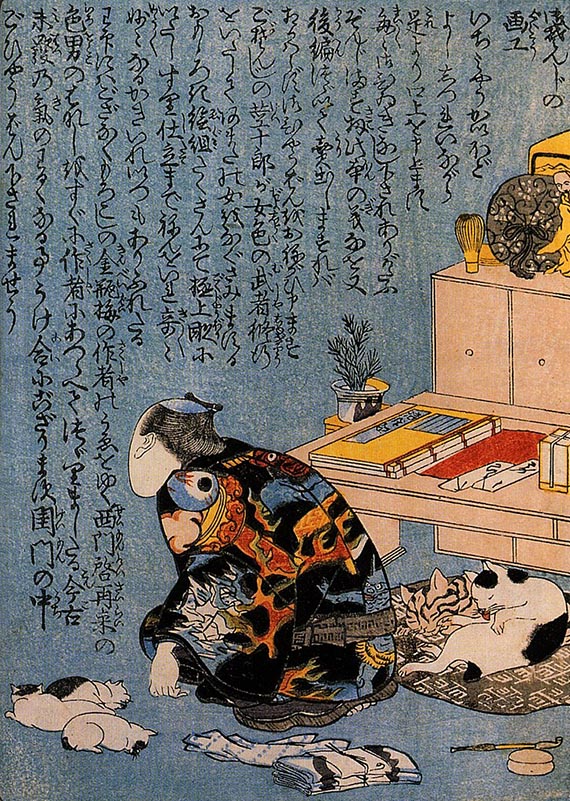
In 1798, Utagawa Kuniyoshi was born to a dyer in Nihonbashi. He learned painting and copying at an early age and became a pupil of Utagawa Toyokuni at the age of 15. Kuniyoshi’s sibling was Utagawa Kunisada, who later became Utagawa Toyokuni III.
In 1814, Kuniyoshi created the cover and illustrations for “Chushingura”, which became his first work. After that, he began to produce Ukiyo-e single pictures, but they did not gain much popularity, and the period of his dismal popularity lasted for a long time.
In 1827, when the Suikoden series gained popularity, Kuniyoshi quickly became one of the best-selling artists of samurai paintings. His eccentric ideas led him to create many popular works, including “Yakusha-e” (portraits of actors), “Bijin-ga” (beautiful women), and “Gi-ga” (caricatures).
Utagawa Kuniyoshi’s masterpiece
Utagawa Kuniyoshi “The haunted old palace at Soma”

Utagawa Kuniyoshi’s “Soma no furudairi” (The haunted old palace at Soma) is a three-panel Nishiki-e depicting a fight of skeleton controlled by Oyataro Mitsukuni and Takiyasha Hime. Kuniyoshi had studied Western anatomy, and its knowledge is utilized in the depiction of the skeleton. The composition, in which the lower half of the skeleton is hidden to give the viewer an idea of the enormous size of the whole, creates a terrifying atmosphere as the skeleton leaps out from the darkness of the flat surface.
Utagawa Kuniyoshi “Miyamoto Musashi Attacking the Giant Whale”
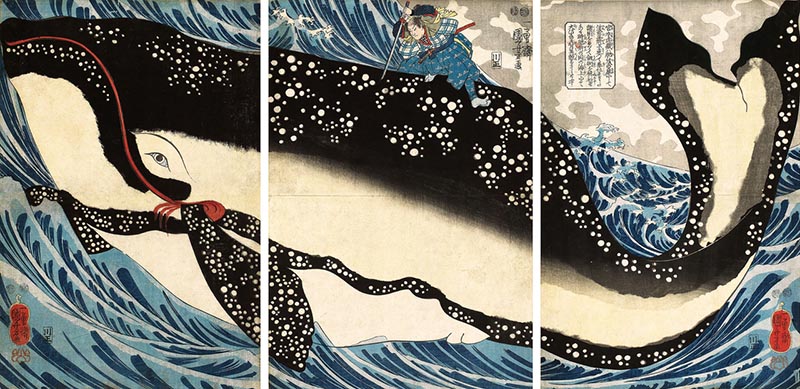
Utagawa Kuniyoshi’s “Miyamoto Musashi no kujira taiji” (Miyamoto Musashi Attacking the Giant Whale) depicts the swordsman Miyamoto Musashi straddling a huge, swimming whale and thrusting his sword into the whale. The contrast between the beautiful whale and the small, but brave Miyamoto Musashi, set against the raging sea and dark sky, is striking in this masterpiece by Utagawa Kuniyoshi.
Utagawa Kuniyoshi “At first glance he looks very fierce, but he is actually a kind person”
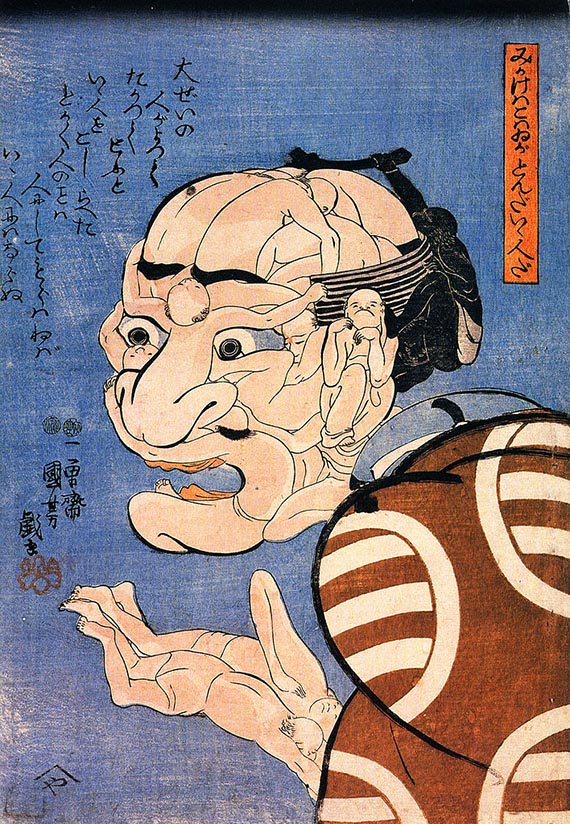
Utagawa Kuniyoshi’s “Mikake wa kowai ga tonda ii hito da” (At first glance he looks fierce, but he is really a kind person) is an Ukiyo-e painting full of his playful spirit. It is a masterpiece of “yose-e” (piled-up picture), in which human faces and naked bodies are posed in various ways and assembled into parts of human faces and hands, and his outstanding sense of style attracted the attention of the people of Edo.
Popularity and Features of Utagawa Kuniyoshi
Innovative and bizarre ideas
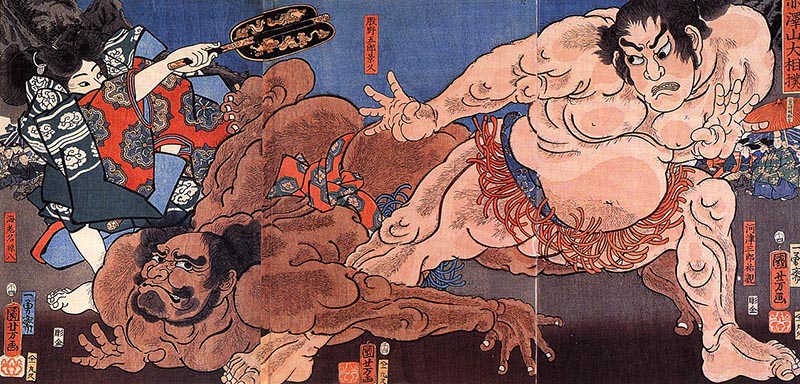
The first characteristic of Utagawa Kuniyoshi’s Ukiyo-e is his bizarre ideas and innovative, bold compositions. Utagawa Kuniyoshi used a variety of techniques depending on the theme of the work. In his “Musha-e”(samurai pictures) and “Sumo-e” (sumo pictures), he used powerful and dynamic compositions to express the strength of the characters.
The three-page “Nishiki-e”, with its wide screen full of giant whales and scary skeletons, shows the true worth of his work.
Utagawa Kuniyoshi was a very outgoing Edokko, and even after the Edo shogunate imposed strict regulations on Ukiyo-e, he continued to produce satirical Ukiyo-e with his originality and original ideas.
Expressionistic fusion of Japanese and Western painting
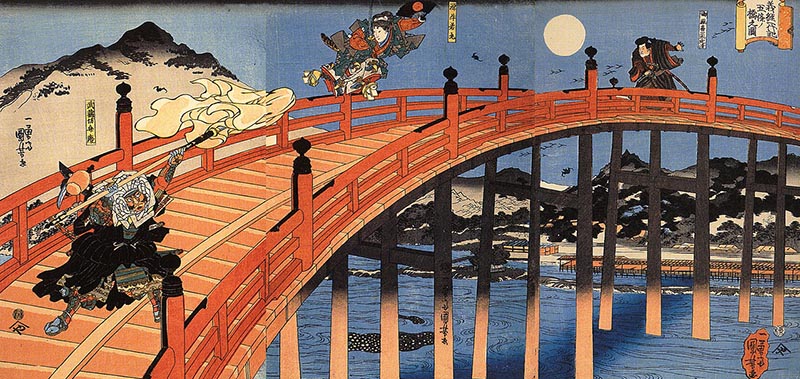
A studious artist, Utagawa Kuniyoshi, is also known as a collector of Western prints. He studied laws of perspective and shadow method of Western painting and established his own style of painting by experimenting with a fusion of techniques found in Western painting and traditional Japanese techniques. His realistic depictions of people are said to had been influenced by Western anatomy.
Kuniyoshi is known for his “Musha-e” (samurai pictures), but he is also highly regarded for his landscapes that incorporate Western techniques.
A wide range of work genres from heroes to cats
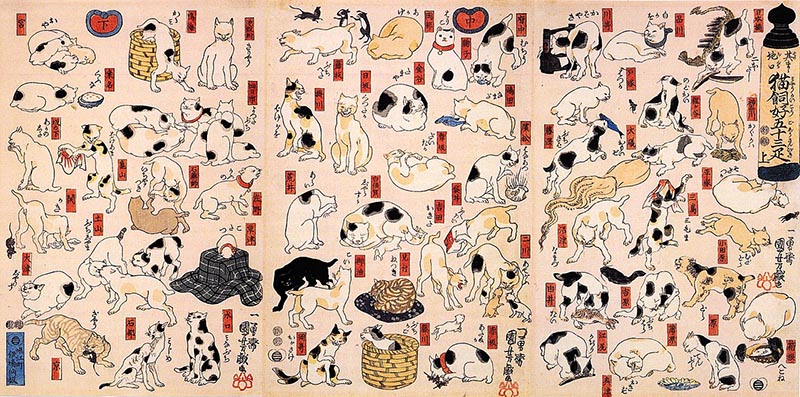
Utagawa Kuniyoshi gained popularity for his heroic “Musha-e” (samurai pictures). Many of his “Musha-e”, including the Suikoden series, feature heroes with tattoos on their upper bodies. These tattoos became very popular among the youth of Edo.
Utagawa Kuniyoshi worked in a wide range of genres, including “Musha-e” and “Yakusha-e”, “Gi-ga”, “Sumo-e”, and “Shun-ga”. He was a cat lover and cherished his cats to the utmost, and many of his works feature cats.
Utagawa Kuniyoshi’s influence and his reputation
Utagawa Kuniyoshi’s influence
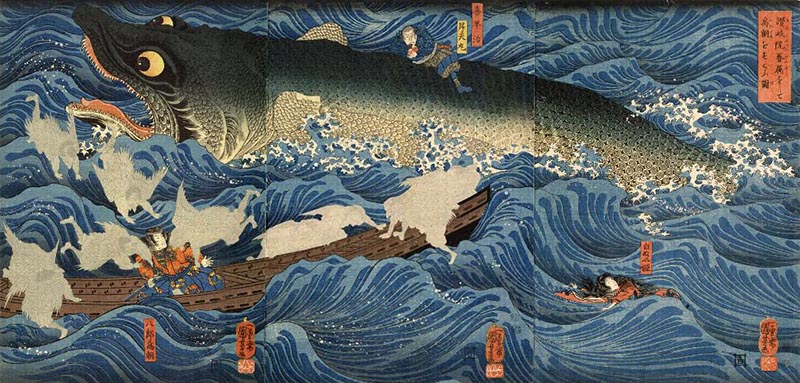
Utagawa Kuniyoshi was known to have had a large number of pupils (more than 70), and his bold compositions and ideas were inherited by many Ukiyo-e artists. And the talent of Kuniyoshi, spread by many Ukiyo-e artists, has certainly been inherited by contemporary artists.
Heroes in modern anime and comics are sometimes influenced by the ideas and compositions of Kuniyoshi’s warrior paintings, such as Suikoden. For example, in the popular anime “Godzilla S.P. (Singular Point)”, an Ukiyo-e painting by Kuniyoshi “Sanuki no in kenzoku wo shite Tametomo wo Sukufu zu” (Retired emperor Sanuki sends allies to rescue Minamoto no Tametomo) is used in a key scene that gives the impression of Godzilla.
Kuniyoshi continues to exert a wide range of influences from Ukiyo-e of the Edo period to contemporary art, and today he enjoys an outstanding reputation both in Japan and abroad.
Utagawa Kuniyoshi’s reputation abroad
The bizarre and vivid Ukiyo-e of Utagawa Kuniyoshi have attracted much attention overseas, and exhibitions of his work have been held in London, New York, and the Netherlands.
Among foreign museums, Leiden National Museum of Ethnology in the Netherlands, is known for its large collection of his works.
Utagawa Kuniyoshi’s rivals

While Utagawa Kuniyoshi gained popularity for his bizarre ideas, two Ukiyo-e artists, Ochiai Yoshiiku and Tsukioka Yoshitoshi, could be cited as rivals to Kuniyoshi.
Ochiai Yoshiiku was a student of Kuniyoshi and a brother apprentice of Tsukioka Yoshitoshi, and was active from the end of the Edo period to the Meiji period. Yoshiiku was a good rival of Kuniyoshi, and after Kuniyoshi’s death, Yoshiiku became one of the most famous Ukiyo-e artists.
Tsukioka Yoshitoshi was an Ukiyo-e artist who was named as a rival of Kuniyoshi along with Ochiai Yoshiiku. Yoshitoshi was known for his cruel and blood-soaked “Muzan-e” (atrocity prints), and been nicknamed “Chimamire Yoshitoshi” (bloody Yoshitoshi). Active from the end of the Edo period to the middle of the Meiji period, Yoshitoshi was called “the last Ukiyo-e master”.
Summary of Utagawa Kuniyoshi
Ukiyo-e artist Utagawa Kuniyoshi was popular in the Edo period for his bizarre ideas and creative expression. His heroic images, as well as his witty “Gi-ga” (caricatures) and “Doubutsu-ga” (animal prints), are filled with his unique humor, and his talent is the one and only.
The expressive possibilities of Ukiyo-e pioneered by Utagawa Kuniyoshi continue to inspire the creativity of many artists and create new fans.
